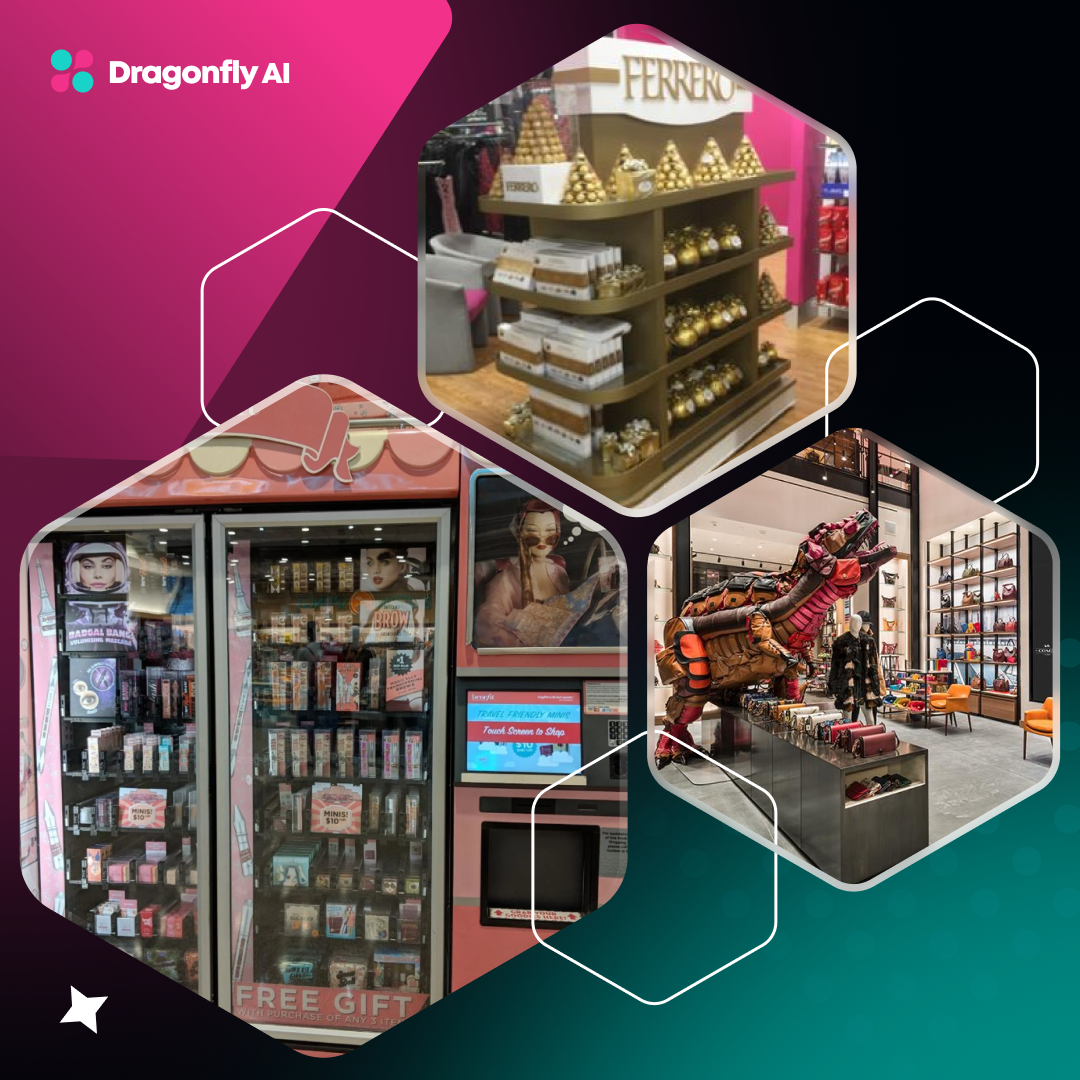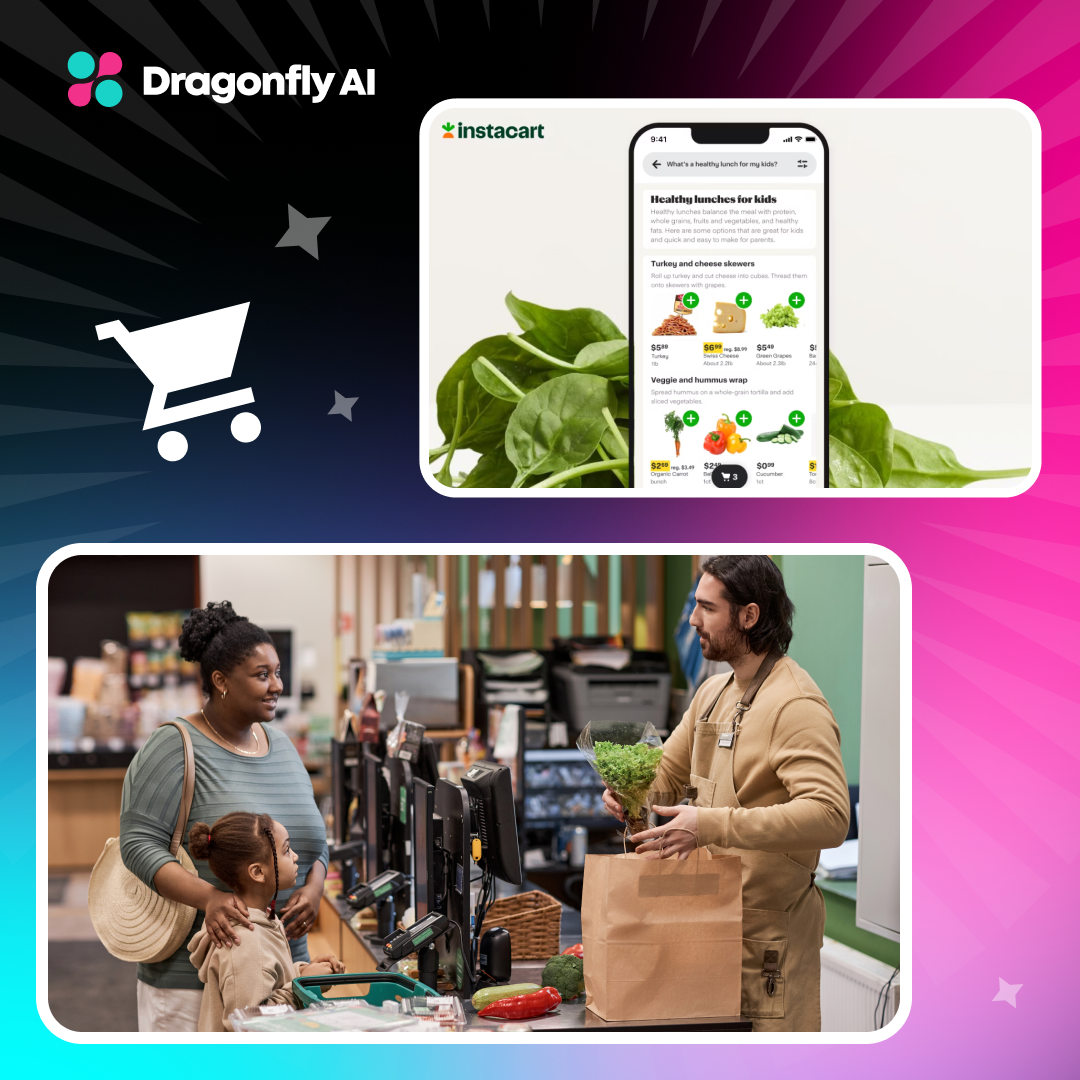The in-store customer experience is undergoing a massive transformation. Gone are the days when a trip to the store was only about picking up items from shelves. Now, shopping has turned into an adventure, thanks to AI and in-store technology.
AI and in-store tech are totally reshaping how we shop. Making stores smarter, shopping faster, and experiences more personalized. From interactive displays that bring products to life to smart carts that guide you through the store, every visit is becoming a unique journey.
These technologies are doing more than just impressing shoppers; they're changing how stores operate and connect with customers. Acting as a bridge between what customers want and what stores offer. Whether it's a personalized recommendation or a quick checkout, AI helps make every part of shopping smoother and more enjoyable.
In this new era of retail, it's all about incredible in-store experiences that make you feel like the store was built just for you, thanks to the space-age wonders of AI and in-store technology.
How is the In-Store Customer Experience Changing?
Today's shoppers are a new breed. They seek efficiency and knowledge, evident in their growing impatience for long lines and their reliance on smartphones for on-the-spot product research.
In a survey from 2021 with over 2,500 shoppers in the United States, it turns out that nearly half of them – about 46% – are using their mobile phones in a pretty smart way while they're shopping in stores. They're not just texting or scrolling; they're actively looking up info about products right there in the aisles. And that's not all – the same number of people, 46%, are also using their phones to compare prices.
This tech-savvy approach means consumers are now walking into stores better informed and less influenced by traditional in-store advertising.
To cater to this new demand, stores are utilizing modern tech that offers speed and information. Self-service options, including self-checkout and mobile payments, are becoming the norm. Stores are also finding innovative ways to provide instant access to product information such as interactive displays and other in-store digital solutions.
For retailers, the adoption of these technologies translates into enriched customer data, allowing for constant refinement of the shopping experience. For consumers, it means shopping journeys that are more efficient, personalized, and enjoyable.
Stores that are successfully embracing these solutions are creating environments that deeply resonate with the modern shopper, offering experiences that go far beyond mere transactions.
AI and Technology: Game-Changers in Retail
AI and other emerging technologies like AR/VR (Augmented Reality/Virtual Reality), and IoT (Internet of Things) are playing game-changing roles in the dynamic world of retail. Fundamentally transforming how we shop in stores, making every visit more engaging, personalized, and efficient.
AI stands at the forefront of this change. By analyzing data from various touchpoints, AI can determine which in-store creatives – like Point of Sale (POS) displays and promotional end caps – are most effective in capturing customer attention.
AR/VR: Blurring the Lines Between Digital and Physical
Technology like Augmented Reality (AR) also adds a whole other layer to the retail experience. Shoppers can now see how products would look in their space or how cosmetics would blend with their skin tone, right in the store. This level of interaction keeps customers immersed in a seamless blend of digital and physical shopping.
VR goes a step further by immersing customers in a completely virtual environment, ideal for experiencing products in an extremely detailed and interactive way.
-1.png?width=1280&height=700&name=Blog%20image%201%20(8)-1.png)
IoT: Connecting Shoppers with Smart Environments
IoT is about creating smart, connected environments. Imagine walking into a store where the shelves know your shopping habits and light up to guide you to your favorite products. Sensors and smart tags can track product movements, manage inventory in real time, and even offer personalized discounts to shoppers as they pass by.
These technologies are making shopping faster, smarter, and more enjoyable. They reduce the hassle of finding products, speed up the checkout process, and provide valuable information immediately.
The Value Addition of In-Store Technology
Technology in retail stores goes beyond just fancy gadgets and interactive screens. Its use creates a symbiotic relationship where both customers and businesses reap huge benefits. This leap in retail tech is setting new standards in customer service and business intelligence.
Imagine walking into a store and being greeted by an AI-powered assistant who can guide you to the exact location of the product you're looking for. This kind of real-time assistance, made possible by AI and IoT, is flipping the script on traditional customer service. No more wandering aisles aimlessly or waiting for a store associate for help. Customers can get what they need quickly and efficiently.
One of the biggest advantages of in-store technology is its ability to gather valuable data. Smart shelves, for example, can track which products are getting the most attention or which ones are frequently picked up but not purchased. This data is a goldmine for retailers, allowing them to adjust their strategies, stock levels, and even pricing in real time.
Ultimately, the goal of integrating technology in retail is to boost customer satisfaction. When customers feel understood, valued, and well-served, they are more likely to return and become loyal patrons. Of course, for businesses, this translates into increased sales, better customer retention, and a stronger brand reputation.
Leaders Creating In-Store Havens with Technology
In the retail arena, big-name brands are already creating unforgettable experiences with the help of technology. Let's dive into how brands like H&M, Audi, and Kroger are using tech to make shopping more fun and efficient.
H&M: Smart Recycling and Environmental Initiatives
H&M is taking big steps to help our planet. They've set a goal to be carbon-negative by 2040, and one of the ways they're making this happen is with their smart clothes recycle bins. You can find these bins in H&M stores.
When you drop off old clothes (any brand, any condition), a screen on the bin shows you how much your clothes weigh and how this helps their tree-planting efforts around the world. You can even scan a QR code to learn more about what H&M is doing for the environment.
These bins are more than just recycling spots; they're part of a fun competition. Stores across the US show how much each city is recycling, turning it into a friendly contest to see who can recycle the most each week. Plus, the bins are hooked up to Microsoft Teams, so staff get a message on their phones when it's time to empty them.
Audi: Virtual Reality in Car Shopping
Audi is changing the way we buy cars with Virtual Reality (VR). In their virtual showrooms, you're not limited by space. You can customize your dream car with any available accessories and features, all in VR. This means you can check out different models, compare prices, and even take a virtual test drive without needing to talk to a salesperson. Audi's specialists and engineers also use VR to design and test new cars, making Audi a tech leader in the luxury car market.
-1.png?width=1280&height=700&name=Blog%20image%202%20(6)-1.png)
Kroger: Digital Price Tags and Smart Shopping
Kroger is using digital technology to make grocery shopping easier and smarter. In partnership with Microsoft, they've introduced digital price tags. These tags let Kroger change prices and start promotions instantly, without needing employees to do it manually. This is a big deal because it makes changing prices much quicker and simpler.
These digital tags connect to your phone, and as you walk through the store, the tags light up with a special icon to remind you to grab items from your shopping list. You can scan barcodes as you shop, which means you can skip the checkout line when you're done. The app even guides you to your next item, shows you coupons, and more.
The Future of In-Store Shopping with AI
As we look towards the future of retail, it's clear that AI and in-store technology aren’t fleeting trends, but pillars of a new era in shopping. The role of AI is poised to evolve, constantly offering new opportunities for innovation.
Imagine walking into a store where AI-driven systems not only recognize your shopping habits but also recommend products that align with your preferences and past purchases. This level of personalization can transform a routine shopping trip into an exciting, custom-tailored journey.
AI's predictive capabilities are expected to become even more sophisticated, so retailers can anticipate consumer needs and market trends with ease and accuracy. Think dynamic store layouts that change based on shopping patterns, AI-powered inventory management that predicts stock levels, or even AI-driven marketing strategies that resonate more effectively with target audiences.
-1.png?width=1280&height=700&name=Blog%20image%203%20(6)-1.png)
For businesses to remain competitive in this quickly evolving landscape, the importance of adopting and embracing AI technology cannot be overstated. Retailers who leverage AI to understand their customers' needs will not only improve the shopping experience but also build stronger, more loyal customer relationships.
The future of in-store shopping with AI looks very promising, with the potential to revolutionize every aspect of retail - from store operations and customer service to marketing and sales
Conclusion: Embracing a New Era in Retail with AI and Tech
As we've just explored, the world of retail is undergoing an exciting transformation, thanks to AI and in-store technology. Gone are the days of traditional shopping experiences; now, every trip to the store is becoming a unique adventure. AI is at the heart of this change, making shopping more personalized and intuitive.
Retailers like H&M, Audi, and Kroger are leading the way, showing us how technology can make shopping not just easier, but also a lot more fun.
Looking ahead, the potential of AI in retail is boundless. It promises a future where shopping is not only more efficient and personalized but also more in tune with our individual preferences and needs. As we step into this new era of tech-savvy retail, both shoppers and businesses are set to enjoy a world of new possibilities.
For Dragonfly AI, this presents an exciting opportunity to be at the forefront of this transformation, offering solutions that boost the customer experience as well as the retailer's understanding of their customers. This isn't just a new chapter in shopping; it's a whole new book, and it's one that we've just opened up.


-1.png?width=1280&height=700&name=Blog%20image%201%20(8)-1.png)
-1.png?width=1280&height=700&name=Blog%20image%202%20(6)-1.png)
-1.png?width=1280&height=700&name=Blog%20image%203%20(6)-1.png)
